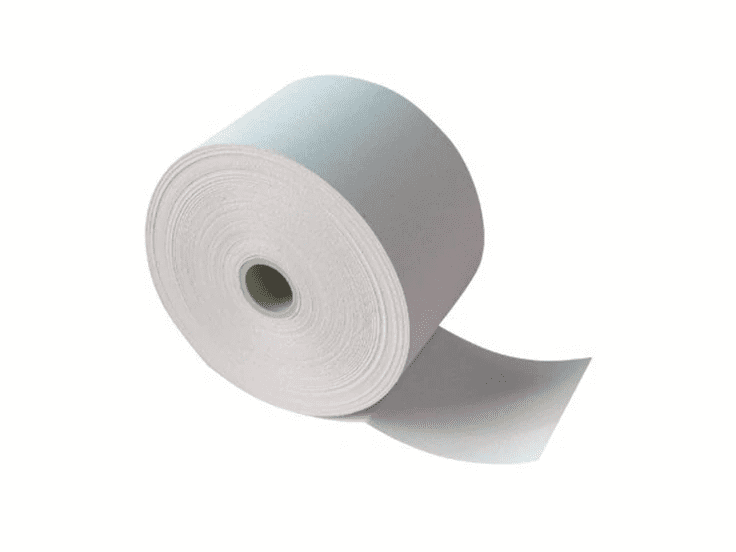Comparing Thermal Paper Rolls: Features, Quality, and Price
- Raghav jain
- Dec 17, 2024
- 4 min read

Thermal paper rolls are a critical component for businesses operating point-of-sale (POS) systems, credit card machines, and receipt printers. However, when choosing thermal paper rolls, businesses often encounter a variety of options that differ in features, quality, and price. Selecting the right thermal paper roll ensures smooth transactions, clear prints, and efficient operations while balancing costs. In this article, we will compare thermal paper rolls based on their features, quality, and price, helping you make an informed decision for your printing needs.
What is Thermal Paper?
Thermal paper is a special type of paper coated with a chemical that changes color when exposed to heat. It is used in thermal printers, cash registers, and ATMs, where the printer head generates heat to produce an image or text. Unlike traditional printing methods, thermal paper requires no ink or ribbons, making it an efficient and cost-effective choice.
Key Features to Compare in Thermal Paper Rolls
1. Paper Width and Length
The dimensions of thermal paper rolls play a critical role in their usability. The width of the roll must match the requirements of your printer or POS system. Standard widths range from 2.25 inches (57mm) to 3.125 inches (80mm).
Smaller machines generally require narrow rolls, like 57mm thermal paper rolls.
Larger systems and receipt printers often use wider rolls, such as 80mm thermal paper rolls.
The length of the roll affects how frequently the paper needs to be replaced. Longer rolls reduce downtime and are more suitable for high-volume businesses.
Tip: Always check your printer's specifications before purchasing to avoid mismatched thermal paper rolls.
2. Core Size
The core is the hollow center of the roll where the paper wraps. Core size typically ranges from 12mm to 17mm and directly impacts compatibility with thermal printers. Larger cores mean less paper per roll but may fit better in compact machines, while smaller cores maximize paper length.
3. Paper Thickness (GSM)
Thermal paper rolls are available in varying thicknesses, measured in GSM (grams per square meter). Common options include 48 GSM to 60 GSM.
48 GSM: Lightweight paper, suitable for basic transactions and low-cost printing.
55-60 GSM: Premium paper offering better durability, image clarity, and a professional look.
Thin paper rolls save on costs but may not last long, while thicker paper provides richer print quality and better resistance to environmental factors.
4. Print Retention
The longevity of a thermal paper roll's print depends on the quality of the coating and storage conditions. High-quality thermal paper can retain images and text for up to 7-10 years if stored properly. Cheaper options might fade within months, impacting long-term record-keeping.
Key Insight: For businesses that need long-lasting receipts (like warranties or legal proofs), investing in premium thermal paper rolls is essential.
Evaluating the Quality of Thermal Paper Rolls
Image Clarity
High-quality thermal paper delivers clear, crisp images and text with consistent black tones. This clarity ensures smooth operations, as receipts are easily readable for customers and business records.
Low-quality thermal paper often results in faded or streaked printing.
Smooth Coating and Resistance
Premium thermal paper rolls are coated with heat-sensitive chemicals evenly. This smoothness prevents damage to the printer head and ensures a longer lifespan for your equipment. Additionally, high-quality thermal paper resists moisture, oils, and heat, ensuring receipts remain intact for a longer duration.
Durability
Durability directly affects usability. Paper that resists tearing and premature fading is critical for businesses that rely on receipts for compliance or return policies. Thicker, premium paper performs better under regular handling and exposure.
Price: Balancing Costs with Quality
When it comes to thermal paper rolls, prices can vary significantly based on the quality, size, and quantity purchased. While cost is a key factor, focusing solely on cheap options can result in:
Frequent replacements (short rolls).
Printer damage due to poor coating quality.
Customer dissatisfaction from unreadable or low-quality receipts.
Price Comparisons
Standard 57mm x 50mm Rolls (Low Quality): Often priced lower due to thin paper and short length.
57mm x 50mm Premium Rolls: Slightly higher in price but offer thicker paper and improved clarity.
Bulk Discounts: Purchasing thermal paper rolls in bulk often reduces costs, making it the ideal choice for high-usage businesses.
Quick Tip: Compare price per roll or per meter to determine the real value when choosing thermal paper suppliers.
Why Comparing Features, Quality, and Price Matters
Making an informed decision on thermal paper rolls helps businesses:
Save Costs: By choosing rolls that balance price and paper length.
Improve Efficiency: Reducing roll replacements saves valuable time during peak hours.
Enhance Customer Experience: Providing clear, professional receipts improves customer trust.
Protect Equipment: High-quality rolls reduce printer wear and tear.
Conclusion: Making the Right Choice
When choosing thermal paper rolls, consider the features, quality, and price together to meet your specific business needs. Standard rolls may work for everyday use, but premium options offer durability and image clarity for critical applications.
Businesses should invest in compatible thermal paper rolls that optimize printer efficiency, reduce maintenance costs, and enhance customer satisfaction. By balancing price and quality, you can ensure long-term reliability while staying within budget.
Final Tip: Look for trusted suppliers who provide consistent quality and value, ensuring you receive the best thermal paper rolls for your operations.



Comments